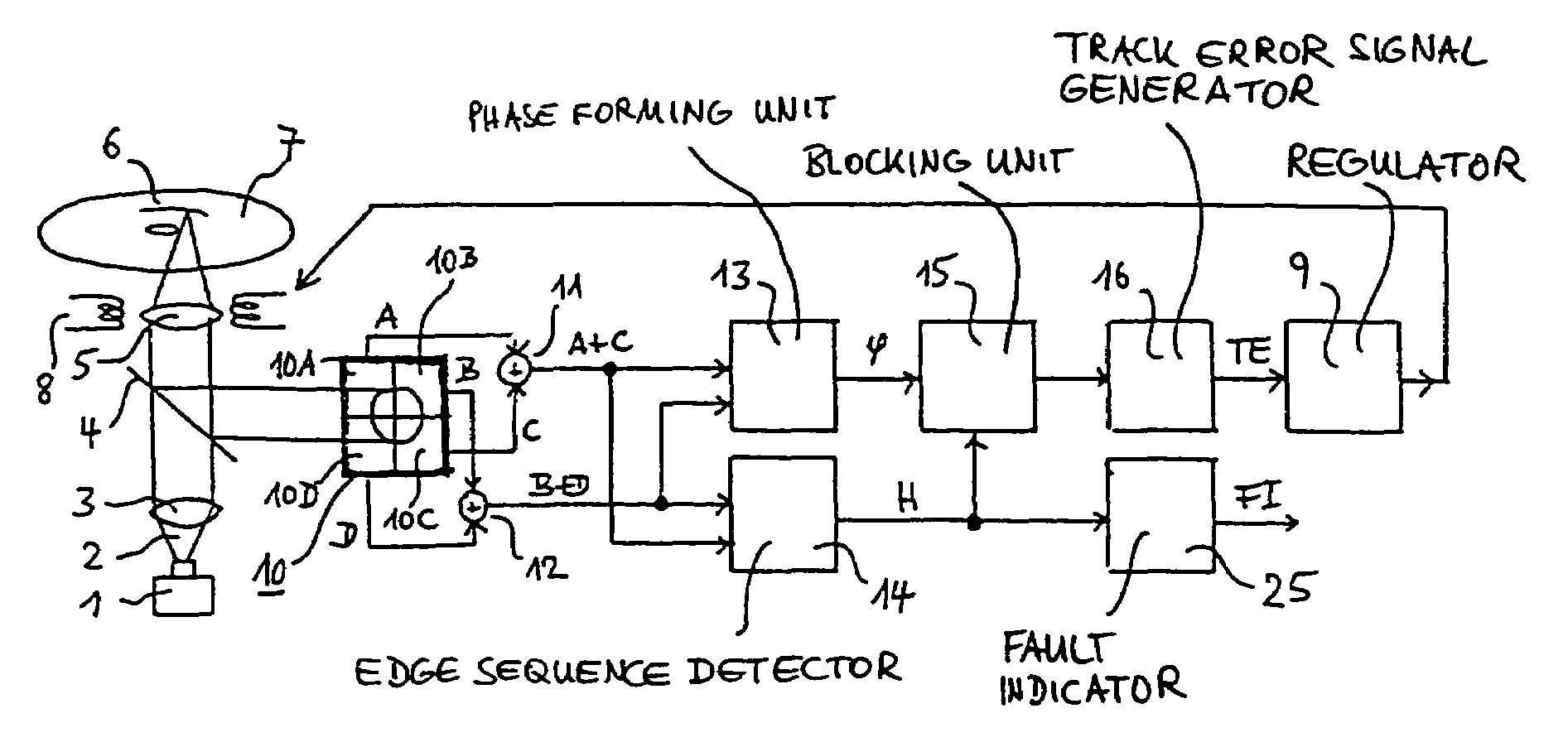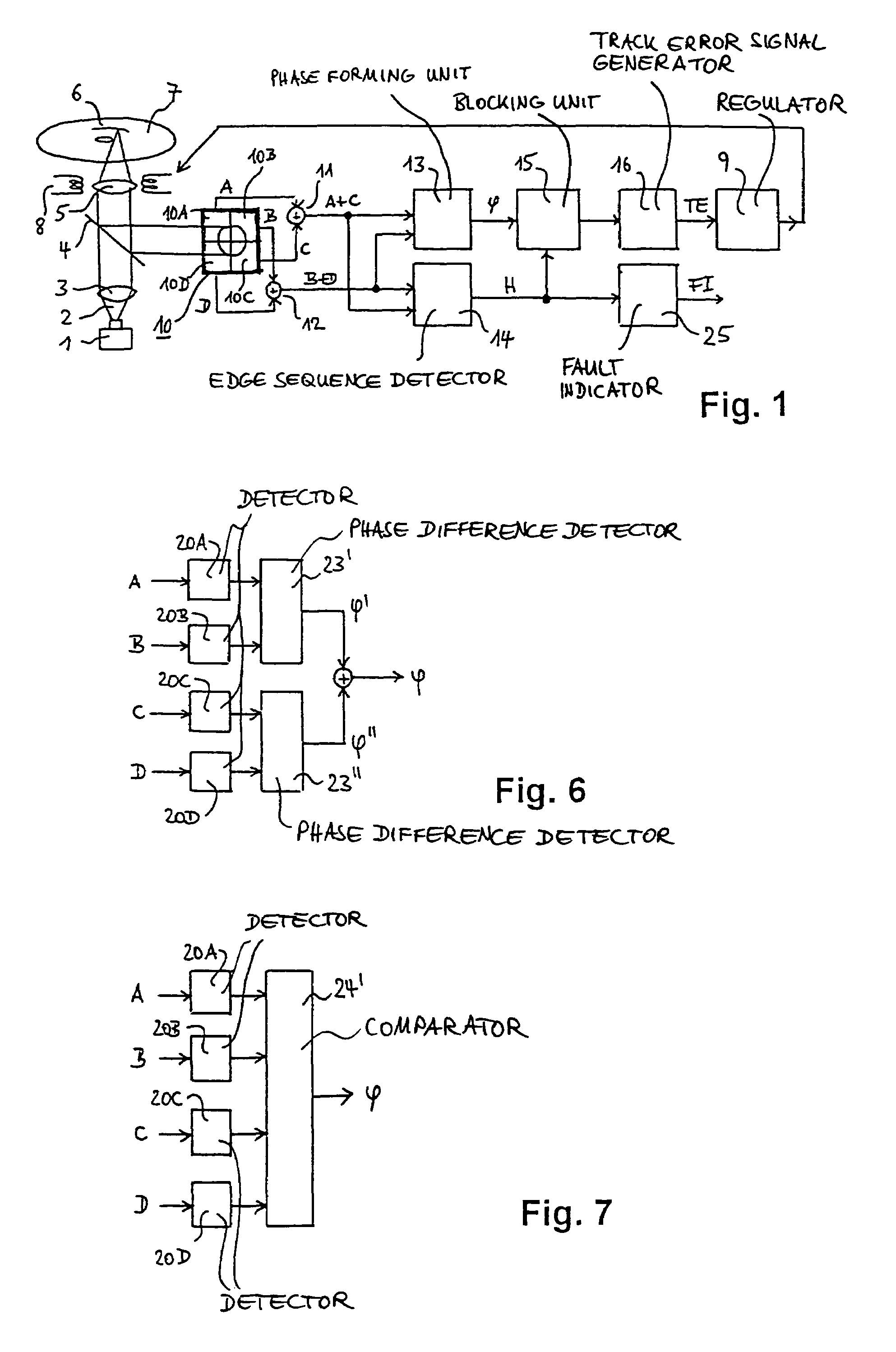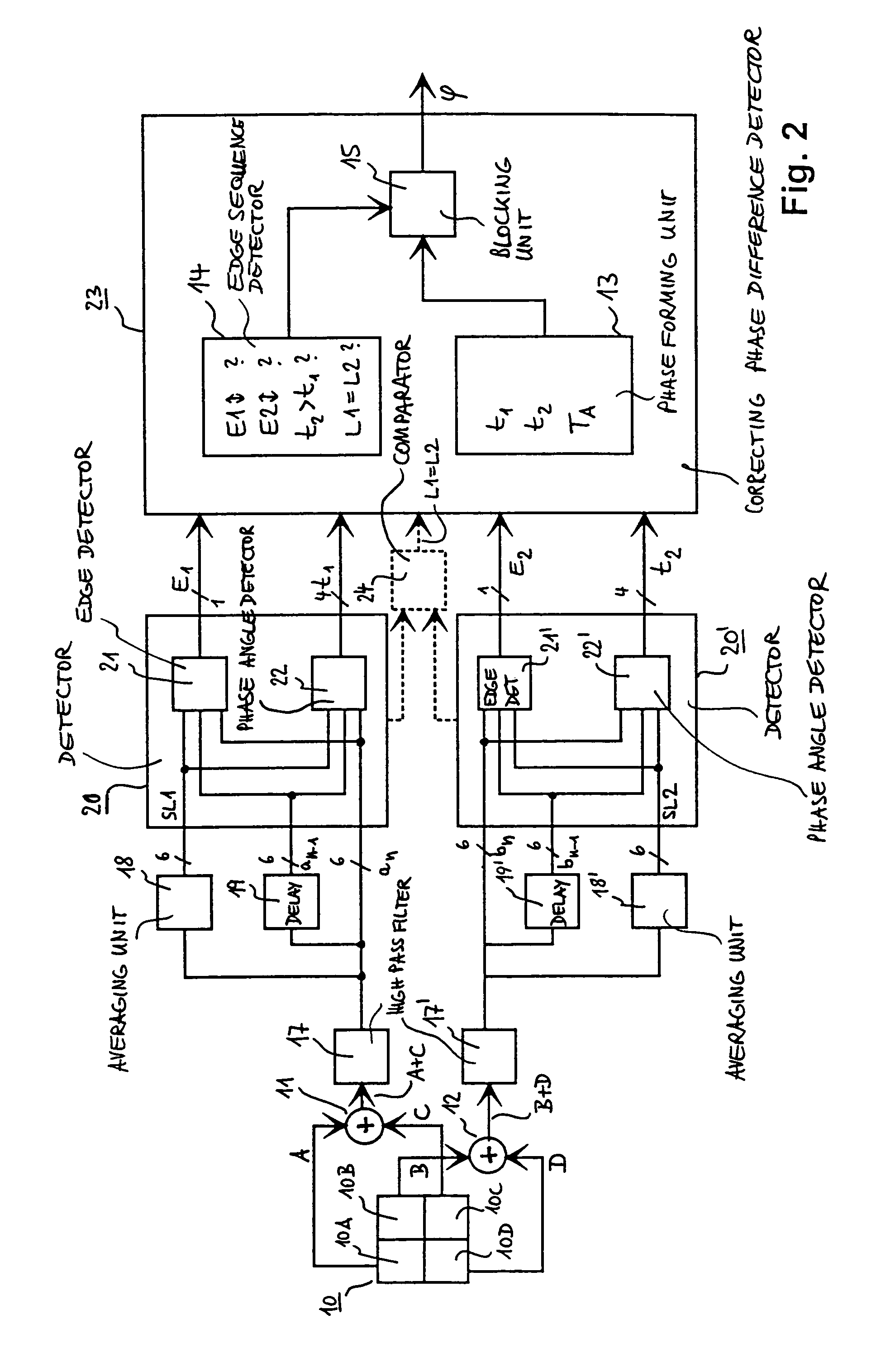Apparatus for scanning optical recording media using a differential phase detection method
a technology of optical recording media and scanning apparatus, which is applied in the direction of optical discs, disposition/mounting of heads, instruments, etc., can solve the problems of incorrect determination of the phase angle of diagonal summation signals relative to one another, inability to determine the correct phase angle, and disadvantages of known apparatuses, etc., to achieve short time intervals, increase the accuracy of phase value, and increase the accuracy of track error signals
- Summary
- Abstract
- Description
- Claims
- Application Information
AI Technical Summary
Benefits of technology
Problems solved by technology
Method used
Image
Examples
Embodiment Construction
[0026]FIG. 1 shows part of an apparatus according to the invention in a schematic illustration. A laser diode 1 emits a scanning beam 2, which is concentrated by a collimator 3. After passing through a semi-transparent mirror 4, the scanning beam 2 is focused onto an information track 6 of an optical recording medium 7 by a focusing lens 5. The optical recording medium 7 is in the form of a circular disc on which there is a spiral information track 6, only a small part of which is illustrated in the figure. By means of an actuator 8, indicated as a coil here, the focusing lens 5 can be moved parallel to the direction of propagation of the scanning beam 2, for the purpose of focusing, and in the radial direction with respect to the optical recording medium 7, for the purpose of tracking. The actuator 8 is driven by a regulator 9 for this purpose.
[0027]The scanning beam 2 focused onto the information track 6 is reflected from the optical recording medium 7, passes through the focusing...
PUM
| Property | Measurement | Unit |
|---|---|---|
| phase | aaaaa | aaaaa |
| phase detection method | aaaaa | aaaaa |
| time period | aaaaa | aaaaa |
Abstract
Description
Claims
Application Information
 Login to View More
Login to View More - R&D
- Intellectual Property
- Life Sciences
- Materials
- Tech Scout
- Unparalleled Data Quality
- Higher Quality Content
- 60% Fewer Hallucinations
Browse by: Latest US Patents, China's latest patents, Technical Efficacy Thesaurus, Application Domain, Technology Topic, Popular Technical Reports.
© 2025 PatSnap. All rights reserved.Legal|Privacy policy|Modern Slavery Act Transparency Statement|Sitemap|About US| Contact US: help@patsnap.com



